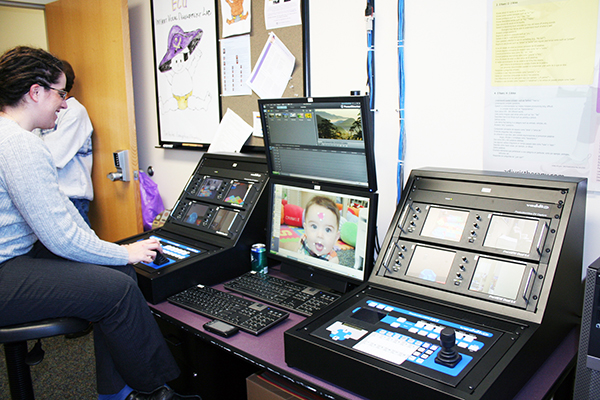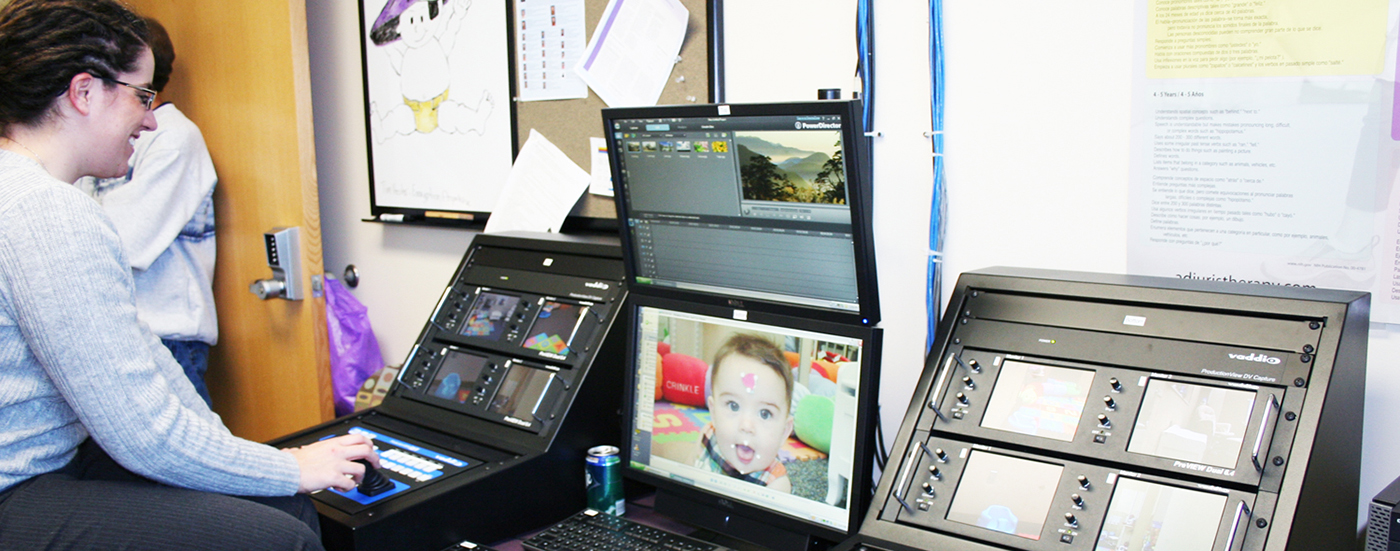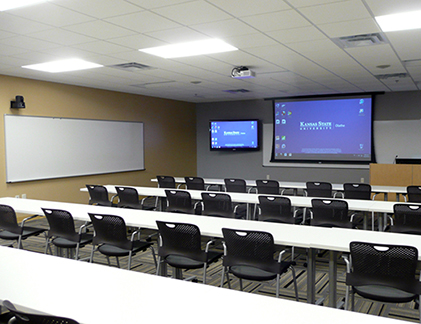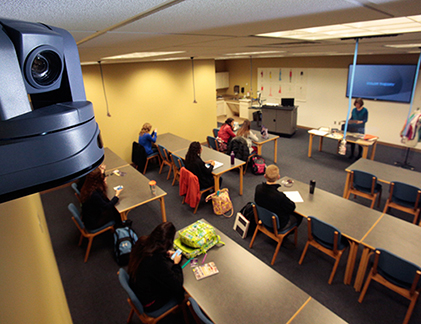Baby Talk Science
Think the cooing, grunting or wailing sounds a baby makes mean nothing? Think again.
By using Vaddio cameras, East Carolina assistant professor, Heather L. Ramsdell is studying how baby sounds develop in the first year of life and the link between those sounds, first words and early language development. “The ultimate goal is to gain a better understanding of normal vocal development patterns in infants, so we can identify earlier those who are at risk for developing speech and language problems,” explains Ramsdell.
Since joining ECU in 2010, Ramsdell has created the Infant Vocal Development Laboratory (IVDL) in the Department of Communication Sciences and Disorders. The IVDL provides a state-of-the art infant and child recording suite consisting of a nursery/playroom and a control room.
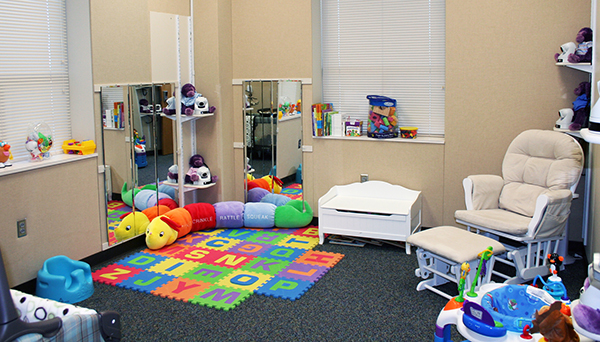
The nursery lab is filled with colored blocks, books and stuffed toys – so parents and children can eat, nap, play – do whatever they do at home. An infant would never even notice the eight cameras partially hidden by purple monkeys mounted strategically throughout the room.
“We have eight cameras – four upper and four lower - but we only need to record two at a time,” explains Ramsdell. “The reason we have so many cameras is that when we analyze the data we need to have a very good view of the baby’s face.” Two angles are recorded: a close up shot of the baby and a wide shot of the interaction between the parent and baby. “We need to know where the baby is looking while talking and be able to see the facial affects. Was the baby happy or sad? Was he or she looking at mom? Did the baby respond to something mom did or said? We have to have the flexibility of changing camera angles to the best views possible.” Having eight cameras provides this flexibility.
“Vaddio allows us to have even more flexibility because all of the cameras move side-to-side and up-and-down.” Each mount is located on a sliding track so they can be repositioned even more. To permit even more camera angles, each wall is covered in mirrors. “We might not be able to get a good camera angle from Camera 1 or 2, but we can get a great shot in the mirror from Camera 3.”
Audio is recorded separately with attached wireless microphones worn by both mom and baby.
The audio and video is captured in an adjacent control room with two Vaddio ProductionVIEW™ FX camera control systems, two capturing devices and two monitors for viewing. Mark Allen, ECU’s electronics specialist, designed the system according to what Ramsdell needed. “When Heather came in she had a list of all the equipment she had been using in Memphis where she recently completed her Ph.D.,” explained Allen. “The way academia works is we try and replicate the labs they came from. I looked at her list and started searching the Internet and other departments on campus.” This is where he was redirected to Herb McGrail with Whitlock.
“I had worked with Vaddio cameras on previous installs at the ECU Brody School of Medicine,” explained McGrail. “I worked with Mark to create a list of everything he would need.”
The entire install only took two months. “By the time we got the funds we needed, we knew exactly what we wanted,” said Ramsdell. “I had already started recruiting participants.” Sixteen families are participating in the study and have been coming in once a month for eight months now. Between Ramsdell and her small army of undergraduate and graduate students in the Department of Communication Sciences and Disorders, they’ve recorded over 112 times.
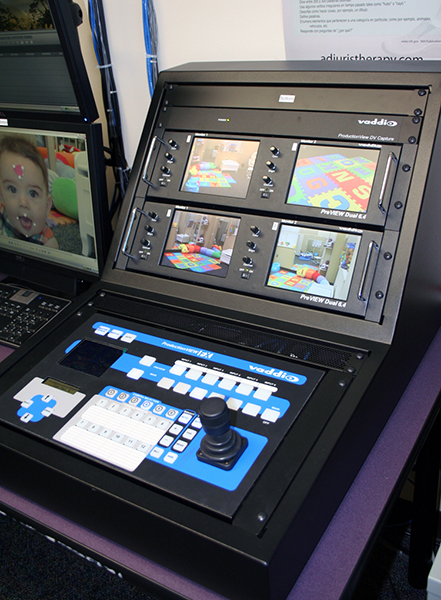
Every time a family comes in at least three people are needed to control everything. During recordings, laboratory staff members have control over each individual Vaddio camera. “Let’s say Camera 1 has a wide shot of mom and baby playing on the mat,” says Ramsdell, “We can zoom in with Camera 1, but Camera 3 would be at a much better angle because I could get a close-up of the baby’s face. All of this can be done simultaneously. We can record and change from any two cameras all at the same time. We just work together and communicate to get the best angles possible.”
In the end, Ramsdell hopes the study will lead to better and earlier treatment of speech and language disorders in young children. The discovery that an early communication problem may be developing allows her team – and eventually others in the field – to facilitate diagnostic and treatment intervention at an extremely early age.
“It’s a very specialized study, but you’d be surprised at how many research labs across the country have recording rooms like this,” explained Ramsdell. “I have a lot of students who may eventually continue on for their doctoral degrees and one day create their own infant labs – across the country – across the world.”
References:
Crystal Baity, ECU News Services
2011 Alliance, ECU College of Allied Health Sciences
Heather Ramsdell, PhD CCC-SLP
Assistant Professor of Communication Sciences and Disorders

